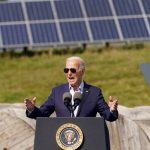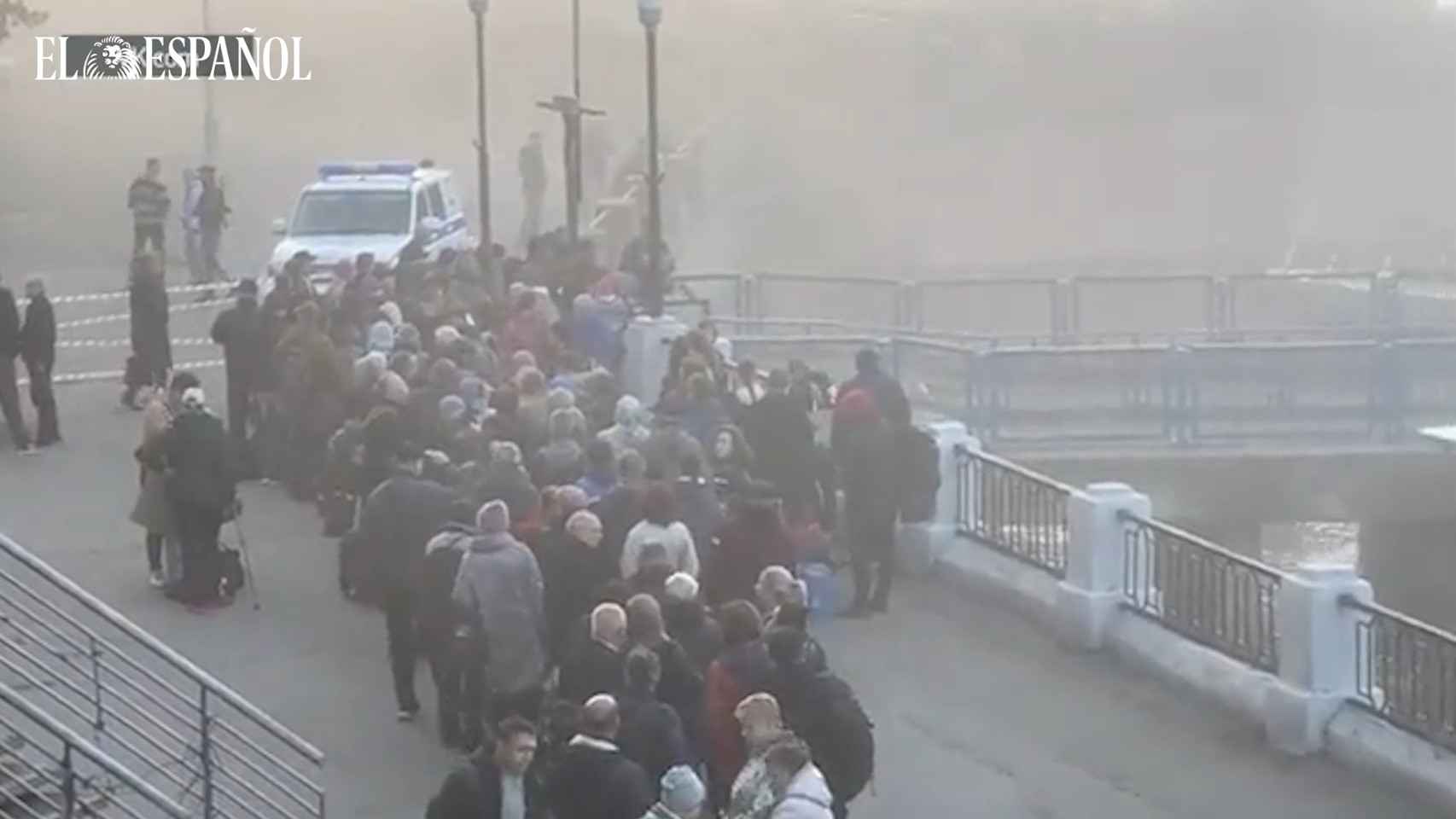No one knows for sure what is happening in Kherson. On Wednesday morning, the pro-Russian authorities in the Ukrainian city called on the population evacuate the city. In a matter of hours, thousands of people crowded into the port ready to board a boat and head to the other shore (the right) of the Dnieper River. Many do not know where they are going or for how long, but the alternative seems much worse.
The Russians, who took the capital of the region of the same name in the first days of the war, maintain that the Ukrainian forces plan to launch indiscriminate missile attacks on the population, bomb the Kakhovka dam, further north, and flood the city. “The Ukrainian side is gathering forces for a large-scale offensive… There is an immediate danger of flooding,” said Vladimir Saldo, the Russian-appointed governor of the area. Under this pretext, Moscow calculates to transfer to between 50,000 and 60,000 people in less than a week to “make them safe from enemies”.
Ukraine, however, has given no indication of wanting to raze Kherson, just as it did not with any of the other cities recaptured during the Kharkov counter-offensive. As he explained to Financial Times Serhiy Kuzan, adviser to the Ukrainian Ministry of Defense, is all part of a “propaganda and disinformation campaign” that enemy forces could use to blame kyiv for some action to come.
[Putin declara la ley marcial en las regiones anexionadas mientras evacúa la ciudad de Jersón]
There are those behind this movement who see the prelude to a military withdrawal of the Kremlin army. Especially after the general of the Russian Armed Forces, Sergei Surovikin, admitted in a strange show of weakness that the situation in Kherson was “hard”. However, it is hard to believe that Putin has agreed to leave the capital of one of the four regions that it recently illegally annexed.
It is too early to know what they are. Russia’s true intentions, but the chances are slim that his army, in the red for weeks and having fallen back miles and miles in record time, is preparing to resist the pitched battle at Kherson. Another option is that his strategy is based on displacing the remaining soldiers there and rebuilding their defenses on the east bank of the Dnieper so that the river’s waters serve as a natural barrier against the Ukrainian advance.
BREAKING:
The forced deportations of Ukrainian civilians from Kherson by the Russian occupation forces has started.
The Russians say they will “evacuate” 60,000 Ukrainians within 7 days.
All they should do is to evacuate their own army back to Russia. pic.twitter.com/VVs94qe9mo
— Visegrad 24 (@visegrad24) October 19, 2022
In this way, Russia can gain time and move the front line closer to Crimeathe peninsula legally annexed in 2014 that Putin has always considered a red line that cannot be crossed. It is enough to remember how after the partial blowing up of the Kerch bridge on October 8, Moscow began to indiscriminately attack civilian targets in dozens of Ukrainian cities.
Beyond Putin’s revenge, the explosion in that key infrastructure that connects Ukraine with Russia caused serious logistical problems for the occupation forces in the south, which were supplied with supplies that arrived through the peninsula. Thus, the Kherson offensive may turn into another military defeat for the Kremlin. But it is not only that: if the Ukrainian troops continue to push, they could reach Crimea.
Martial law and reinforcements
Apparently, the partial mobilization of 300,000 reservists is not sufficient to stop Ukrainian forces equipped with HIMARS missiles and other Western weapons. For this reason, while the evacuation of Kherson began, Russian President Vladimir Putin took the opportunity to decree the martial law in the provinceas well as in Zaporizhia, Donetsk and Lugansk.
[El Grupo Wagner desafía a Putin e intenta tomar el control del ejército del Kremlin en Ucrania]
In this way, Putin increased the powers of regional governors and ordered the creation of a coordination council under the command of Prime Minister Mikhail Mishustin to support his “special military operation“. According to the Russian leader, the intention is that “the entire state administration system“-and not just specialized security agencies–be prepared “to support the military effort in Ukraine.”





![[Img #74664]](https://thelatestnews.world/wp-content/uploads/2024/12/James-Watson-The-controversial-genius-behind-the-double-helix-150x150.jpg)







